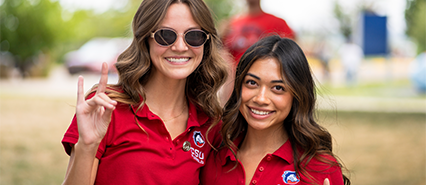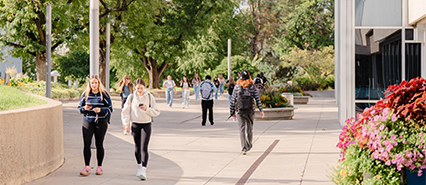3D Printing
The Innovation Lab provides 3D modeling and printing services to current CSU Pueblo students as part of the Student Technology Fee. Each fall and spring semester, every enrolled student receives 500 grams of printing filament to be used for class assignments and/or personal projects.
Once your model is ready for printing, submit it as a file through our 3D Print Request Form. Once received, we'll begin processing it through our IT Support Ticket System, notifying you that we've received your request and when it's ready to be picked up in the Innovation Lab or if there has been a delay in printing. We retain printed objects in the lab for two weeks after sending a notification for pickup. After that, prints become the property of the University Library and may displayed or disposed of.
See some tips below to find out more about 3D printing and how to start creating models of your own!
For more information, check the University Library 3D Printing and Scanning Policy.
What Equipment is Available?
Printers:
- Four (4) Creality Ender-3 Pro V2
- One (1) Creality CR10S Pro V2
Software:
- Ultimaker Cura
- PrusaSlicer
- Simplify3D
Accepted File Types:
- STL
- OBJ
- 3MF
Print Technology:
- Fused Deposition Modeling
- Ender-3 Build Volume (in cm)
- 22 x 22 x 25 cm
- CR-10 Build Volume (in cm)
- 30 x 30 x 40 cm
- Layer Resolution
- 100 microns [0.1 mm]
FAQ
-
WHO CAN SUBMIT A 3D PRINT REQUEST?
The 3D modeling and printing services offered by the Innovation Lab are available to all current CSU Pueblo students.
This service is funded by the Student Technology Fee.
-
HOW MUCH CAN I PRINT EACH SEMESTER?
Each students receive 500 grams of printing filament every fall and spring semester to use for class assignments and personal projects.
If a student exceeds their 500 grams of filament limit in a given semester, they can purchase or bring intheir own spool of filament.
The filament allotment resets at the beginning of each semester.
-
HOW FAR IN ADVANCE SHOULD I SUBMIT A PRINT REQUEST?
The Innovation Lab processes print requests on a first-come, first-served basis. However, priority is given to requests that are submitted for class projects.
If an item is needed by a specific deadline, we recommend submitting it at least two week prior to the due date.
If you have questions or concerns with receiving a print on time, come chat with the Digital Technology Specialists in the Innovation Lab to discuss your project.
-
CAN I BOOK THE INNOVATION LAB FOR 3D PRINTING AND MODELING WORKSHOPS?
Yes! We work with many campus groups and classes to provide information on learning how to create 3D models and printed objects. We can even tailor our modeling and printing presentations to make it more relevant to class topics. At the end of the workshops, participants receive their own 3D objects by the end of the semester!
We're always looking for more ways to connect technology to students at CSU Pueblo. Contact the Innovation Lab or Innovation Lab supervisor to discuss your workshop and program needs!
-
HOW CAN I START 3D MODELING ON MY OWN?
Many different programs can produce printable 3D models. Most 3D modeling software will output the STL file type. Some popular options include SolidWorks, Inventor, 3DS Max, Blender, Creo, AutoCAD,Rhino 3D, Sketchup and Tinkercad.
For beginners learning to create 3D models, we recommend starting with Tinkercad. It is web-based, optimized for 3D printing, and easy to get started with after creating a free account.
Students can find free downloadable 3D printable files at Thingiverse.
-
WHAT IS 3D PRINTING AND HOW DOES IT WORK?
3D printing is the process of making a physical object from a digital model. Also called additive manufacturing, the physical model is built up one layer at a time. Our 3D printer feeds a plastic filament through a heated nozzle which melts the plastic. Computer-controlled motors move the nozzle around to create the shape of a layer, which hardens immediately. Objects are built this way, one layer at a time, from the bottom up. -
WHAT ARE SOME PRACTICAL USES OF 3D PRINTING?
There are many practical applications for 3D printing, from aerospace and automotive engineering to prosthetics and other medical uses. 3D printing enables rapid prototyping of design concepts and functional, working models. Additionally, it is used for low-volume, custom, or on-demand manufacturing.


